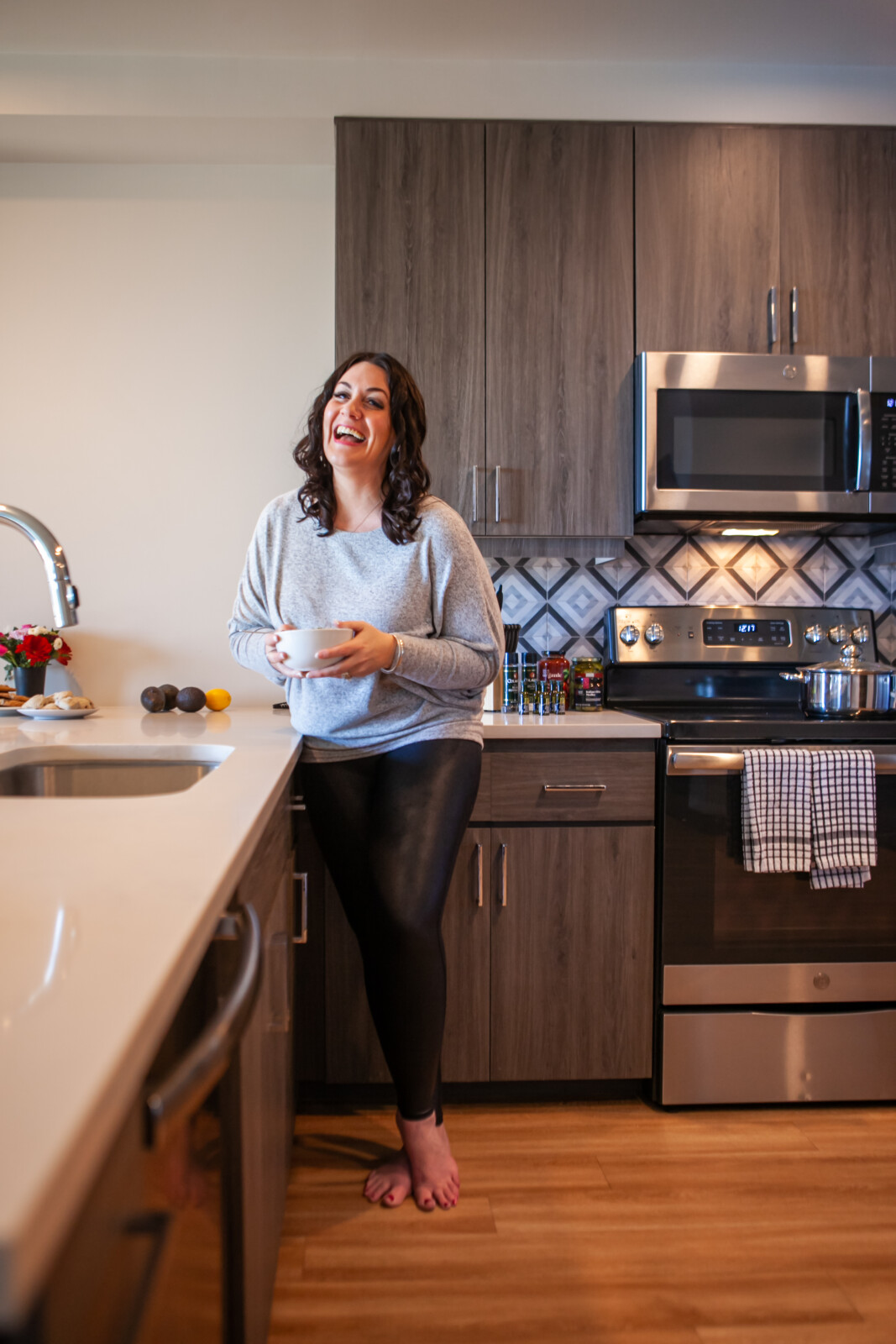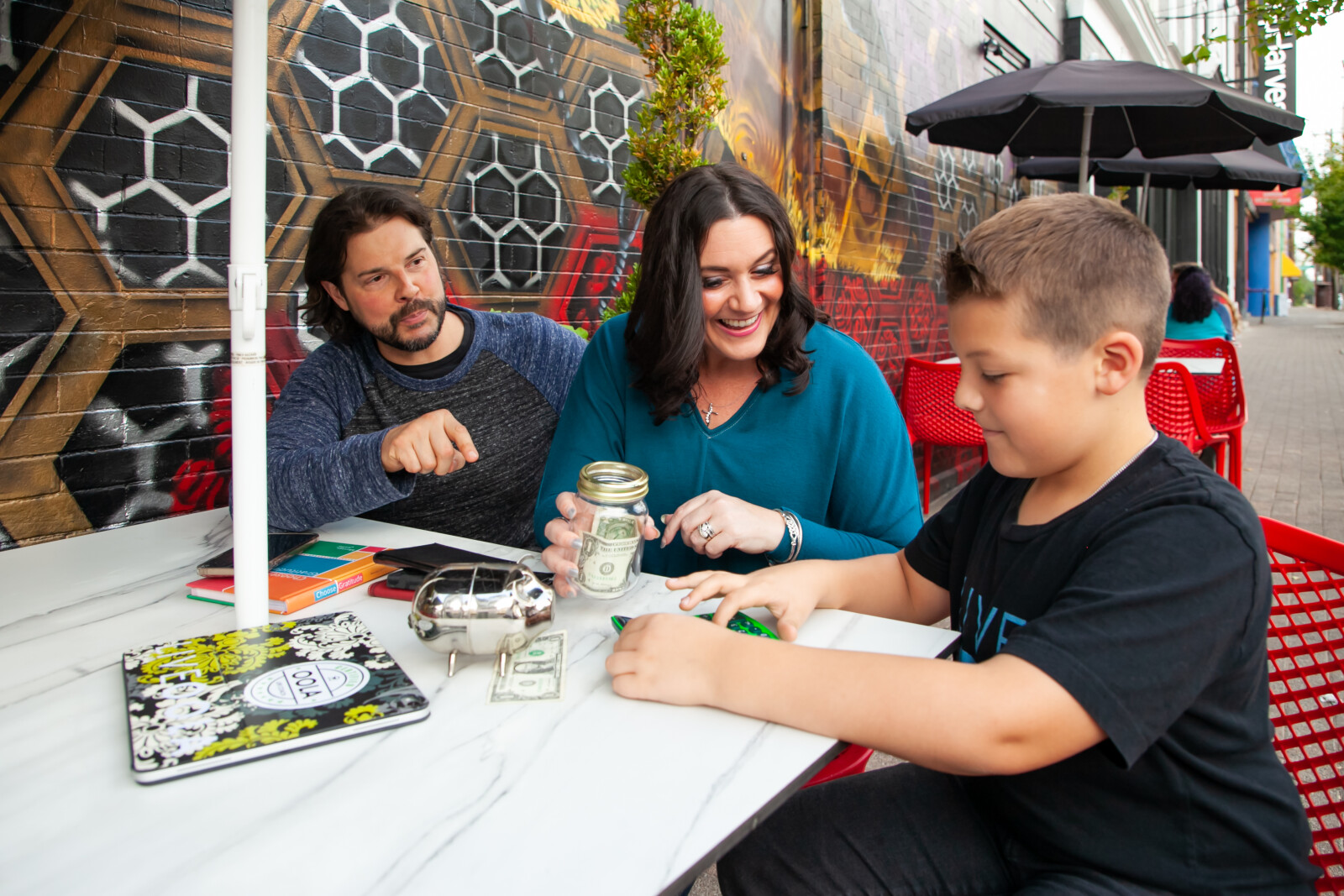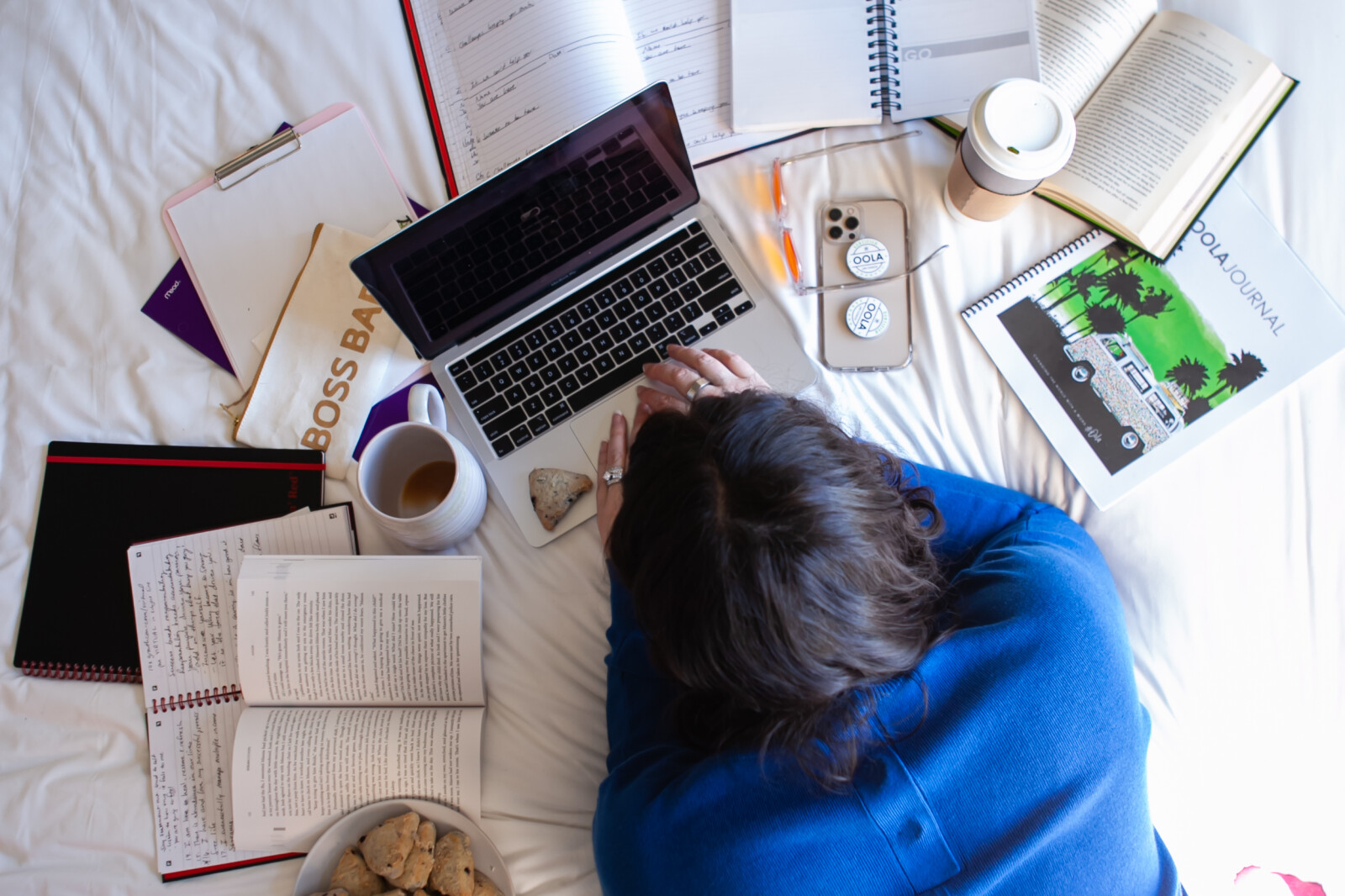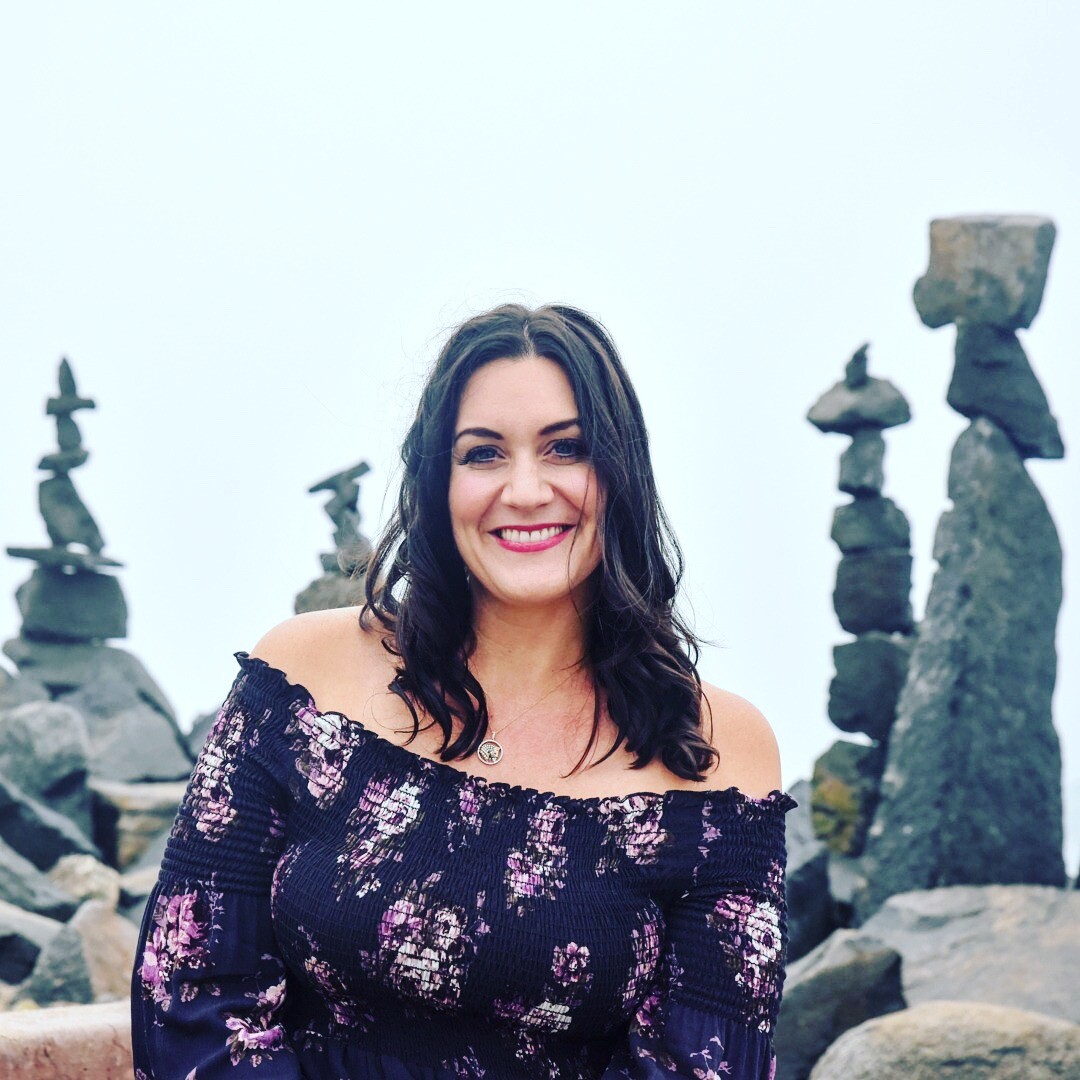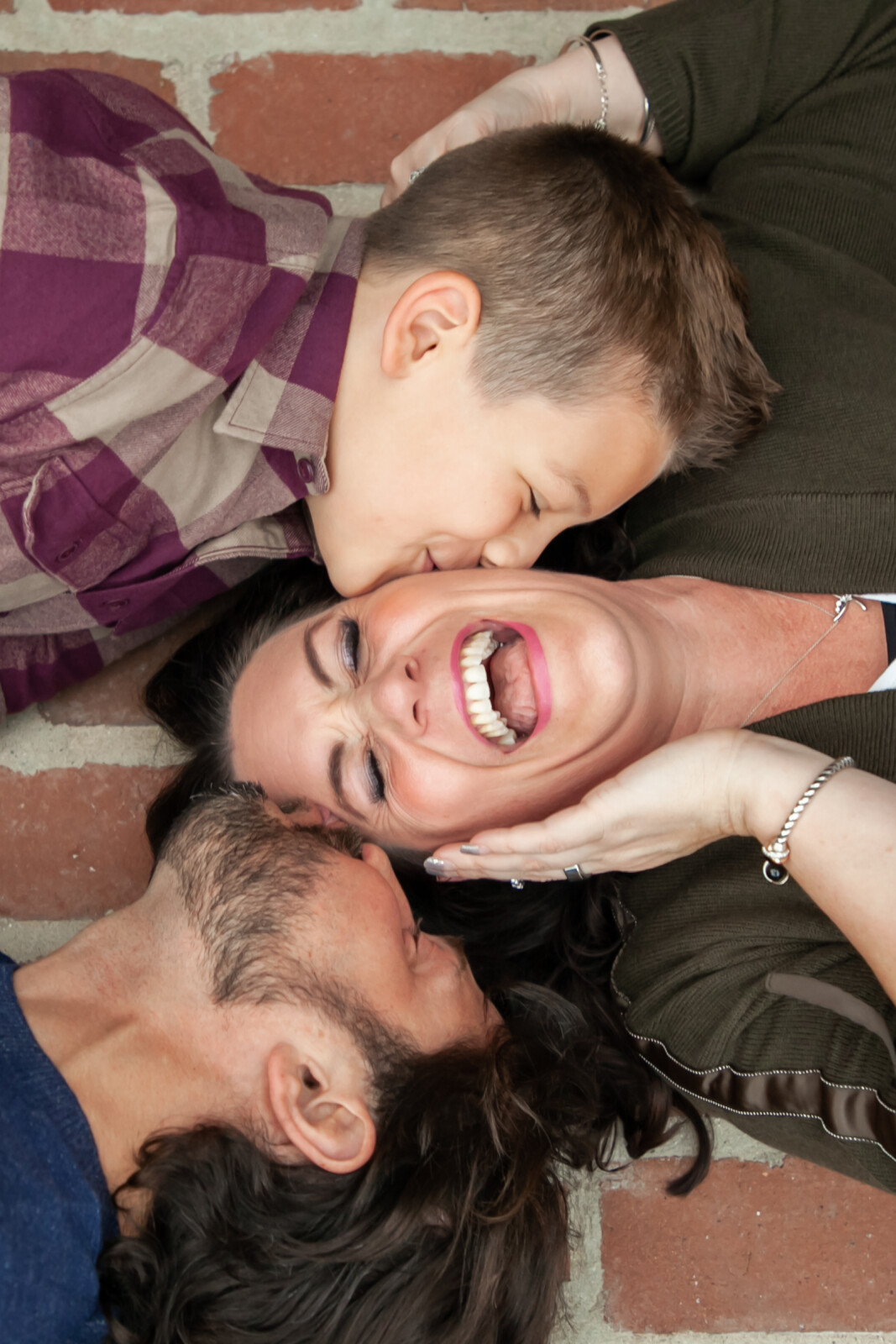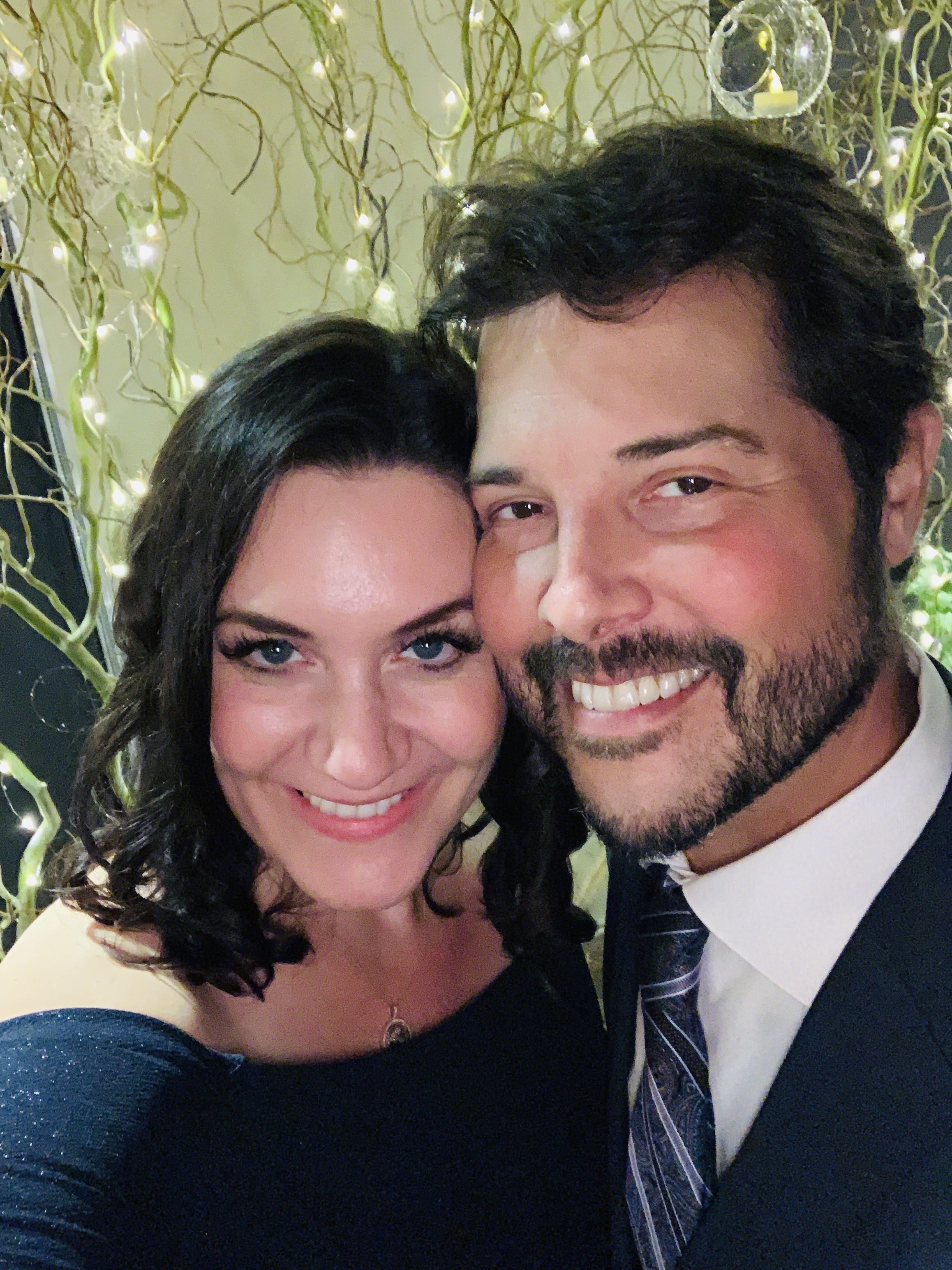
17 years ago I made a decision to get breast implants. Today, I’m bringing you along on my journey of removing them, and my discovery of Breast Implant Illness.
Although hundreds of thousands of women are experiencing issues similar to mine and deciding to ex-plant, Breast Implant Illness (BII) is still being heavily researched. Most doctors and plastic surgeons currently deny it is a real issue.
The doctor I ultimately chose to move forward with, a professional with the University of Kentucky, was impressed with all the extra testing I had done. She requested to see all of my tests and asked if I would be willing to participate in a study the University is doing to find out more about BII.
While I’m not a doctor, I am someone with breast implants who knows their own body. I’m sharing my story not for sympathy, but to maybe empower someone else to dig into this problem.
Why breast implants?
To be clear, getting implants is a decision that I do not regret at all – it was the right choice for me. I had the funds to do it and researched the procedure like crazy. Once it was done, the insecurities I used to have about my body were replaced with a new-found confidence. I was, and still am, proud of myself for doing something that made me feel so beautiful and strong.
The turning point: Symptoms of BII
Admittedly, I was not completely aware of the long-term risks. I did my due diligence to research and understand what I was getting into for the most part, but in nearly two decades since I first got my implants, my knowledge and experience in the natural health world has grown immeasurably. For the past 17 years, I sailed through nearly zero issues, as far as I could tell. Until last year…
Last year my sleep started suffering. I thought it was due to stress.
Then the brain fog became unbearable at times. I figured that was due to sleep deprivation and aging.
My joints started aching all the time. I used to be a full-time massage therapist, which can definitely take a toll on the body, but I wasn’t even massaging anymore.
Then came the swelling, fluid retention, lasting bruising around my ankles, hair loss and serious fatigue. I knew something was very wrong. I shouldn’t be feeling the way I did.
The road to healing from Breast Implant Illness
It’s been a long, long road of discovery to take back my health. At the time I’m writing this, today is the day I have my first consultation for my explant surgery – my OolaOne this year (aka, my one really big goal for myself – If you want to learn more about finding life balance with Oola, learn more here.)
I’ve invited you into my story because I want you to see that healing is possible and attainable for you. We have to be our own health advocates and learn to listen to our bodies. As a Licensed Massage Therapist for 16 years and Nationally Approved Provider of Continuing Education and wellness educator, this has proven to be true in my life! Working with thousands of clients and telling them to pay attention to what their bodies are telling them now has me practicing what I preach.
I started the long journey of finding medical professionals and getting tests done, which has come with its own unique set of obstacles. Both my husband and I are completely self-employed, so everything goes through private pay. Thank the Lord for Oola Green Gap and savings! This also all started going down during Covid, which only added to the stress and complications.
Finding the right doctor for Breast Implant Illness
First, I visited my primary Doctor and told her something was wrong. She ran all the usual tests, which came back “normal,” but then offered to give me some anti-anxiety meds if I was overly stressed. No, thank you. This was not just anxiety – something was truly wrong in my body and I knew it.
Then I visited a holistic medicine physician with secondary training in Japanese acupuncture. This whole-body approach resonated with me so much more. Dr. Amy Coleman communicated her expert knowledge so beautifully about the gut biome and the role it plays in our wellness – If our gut isn’t happy, it can lead to a whole lot of other problems. We had more tests done, but they came back with no real conclusions for what was causing all of my symptoms.
It was my long time friend and long distance personal trainer, Nicole Cress, who suggested I do the Dutch Complete Hormone test. My local personal trainer and un-proclaimed Life Coach, Michele DeJesus, agreed things didn’t seem right and encouraged me to pursue more answers. Another fitness friend, Kim Schaper, also encouraged further testing. These ladies either know me very well or have had enough experience with others to prompt me to deeper research.
What happens next?
My explant surgery is officially scheduled for April of this year! I’ll continue to share my story and update you along the way, both on my website and on Instagram. Follow along!

With a global pandemic upon us, 2020 was a year when virtually everyone was focused on their health and fitness. Or were they?
While we were busy social distancing and stockpiling, many people overlooked other health conditions, spaced on their routine workouts, rationalized work-at-home snacking… and saw their stress levels skyrocket.
This year definitely came with plenty of distractions and opportunities for excuses. Maybe you abandoned your gym routine or other healthy habits somewhere along the way. It’s been a strange year, and it’s ok that you don’t feel like your best self right now – in fact, that’s completely normal and expected in stressful circumstances.
Ready to stop feeling stuck and start finding balance? I’m a certified life coach and would love to talk to you!
What a fitness routine can do for you
What better way to combat stress than to work through it physically? If you’ve heard of or experienced a “runner’s high,” you know what I’m talking about. Our bodies release happy hormones called endorphins when we engage in physical activity, and it’s just a good idea for your overall health to be physically active.
Having a routine for moving your body will make it easier for you to commit to taking care of yourself in this way. Without a clear plan or goal, you’re much more likely to skip working out, avoid creating time for it, and continue to feel stuck.
If 2020 was a “fitness fail” for you, it’s time to get back on the horse and find your rhythm again.
How to create your own routine
This may seem obvious, but the first step in creating your fitness routine is to pick an activity you actually like to do.
Working out can and should be enjoyable! It also can and should be challenging, but not in a way that makes you want to avoid it at all cost. Choose to practice activities that are fun, make you feel stronger, or give you that rush of mental clarity. Don’t force yourself into a workout routine that you hate; you likely won’t stick with it long if that’s the case.
Here are some popular activities to consider:
- Running
- Weight lifting
- Cycling
- Dance
- Yoga
- Skating
- Tennis
- Basketball
- Barre
- Kayaking
- Hiking
- Boxing
These are just a few ideas to help you get started. However you choose to move your body is up to you!
How to commit to your fitness routine
If you’ve had trouble in the past actually showing up to the activities you’d picked out for yourself, this part is for you.
When we’re first beginning to develop new habits, the hardest part is consistency. In order to solidify these good habits and make them more automatic, we have to do the hard work in the beginning of showing up over and over until it sticks. The more consistent you can be right off the bat, the more likely your new habits and routines will stick long term.
Here are some things to try when you’re creating a new routine:
- Write it down. Get a pen and paper and physically write out your fitness goals. Writing down your goals helps your brain retain and subconsciously work toward them.
- Schedule it in. Put your workouts or activities into your calendar. Remove the excuse that there’s not enough time by making time for it. And then actually go when you say you will.
- Pack your gym bag the night before. Put it in your car the night before, too, if you’re worried you’ll forget it. Cut out as many excuses as possible!
- Tell your significant other, your family, or a close friend about your goals. Ask if they’ll help keep you accountable to the plans you’ve set out for yourself. Telling another person about your goals gives you even more reason to follow through.
Here’s to a healthy new year!
Remember: You are more than your routines and your habits. A missed workout does not mean you’ve failed, and it sure isn’t a reason to quit completely!
Move your body in ways that feel good to you and challenge you, and you’ll be on your way to a successful fitness routine and a healthier life.
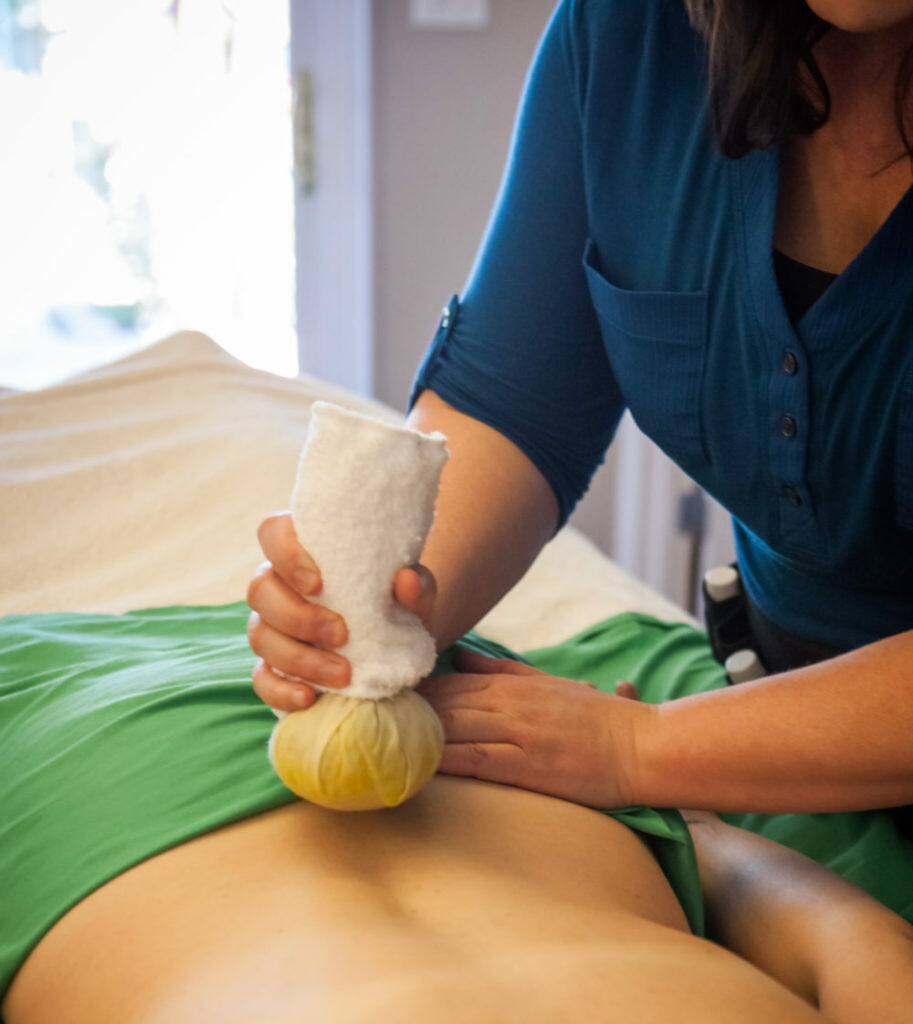
When most people think of massages, they think of relaxation, tranquility, and feeling good. Did you know that massages are not only a comforting way to wind down after a stressful day but also provide numerous health benefits? Here are just five of the many ways massages can positively impact your health:
- Massages ease muscle pain. Whether you have a sports injury, a soft tissue strain, or sore muscles from everyday use, a massage can help. In particular, one Annals of Internal Medicine study published in 2011 found that massage therapy can effectively treat chronic back pain. Back pain is the world’s leading cause of disability.
- Massages can help manage high blood pressure. About 75 million Americans live with high blood pressure, which often has no symptoms and is sometimes calls the “silent killer.” Massage therapy offers one option for managing this condition. Consult a physician to see how you can combine massage with other healthy lifestyle choices to manage your blood pressure.
- Massages can boost the immune system. Particularly during stressful seasons of life, the immune system may be compromised. Studies indicate that massages can help increase a person’s white blood cell count. These cells help defend the body from illness.
- Massages can reduce stress. “Research suggests that more than 90 percent of illness results from stress alone,” according to a Mayo Clinic article. Research shows that getting an hour-long massage can cut down an individual’s cortisol (stress hormone) levels by as much as 30 percent and increase its serotonin (anti-pain mechanism) by as much as 20 percent.
- Massages can combat the “Sitting Epidemic.” Long periods of time spent sitting can cause postural distress than manifests itself in shoulder, neck, and back pain as well as lower back weakness. Massages can help reverse or relax the negative effects of too much sitting.
What are you waiting for? Schedule an appointment with a massage therapist or learn more about how to implement massage therapy techniques at home!
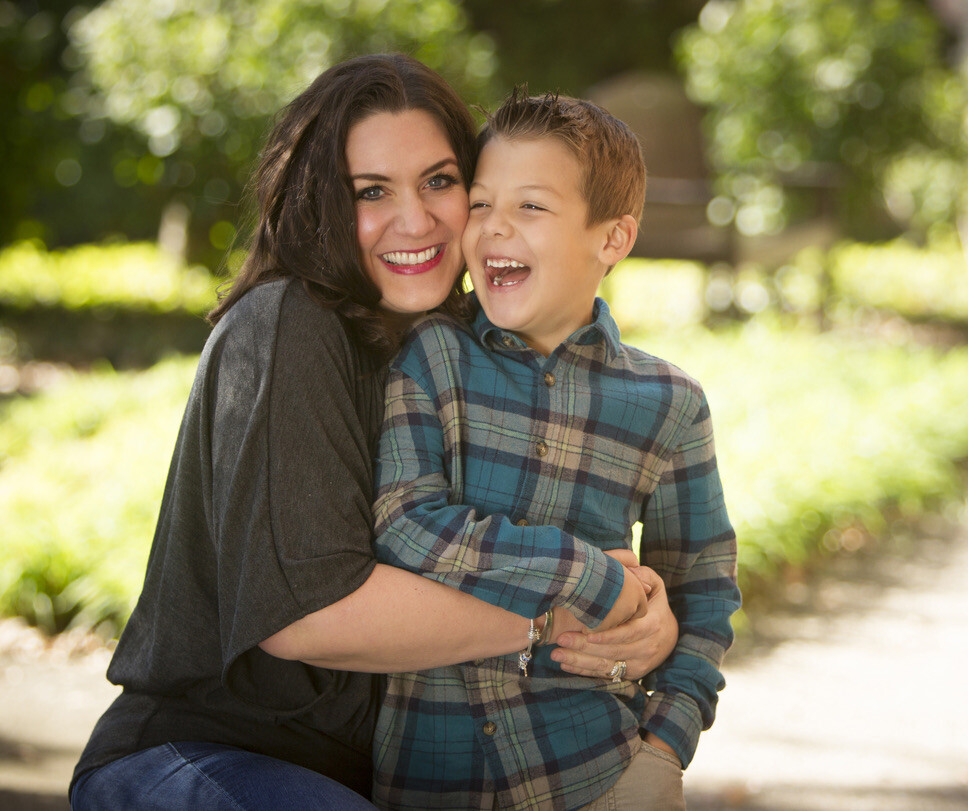
Every year, National Family Health & Fitness Day is celebrated on the last Saturday in September. This year, it falls on Saturday, Sept. 29. Stay informed regarding best practices for your family’s health and fitness and get moving to celebrate National Family Health & Fitness Day this weekend!
The Purpose of National Family Health & Fitness Day
The Health and Information Resource Center established National Family Health & Fitness Day in 1996 to encourage people of all ages to prioritize physical activity.
About 80.2 million Americans over the 6 of six are physically inactive. Physical inactivity is a leading cause of disease and disability, according to the World Health Organization. Some risks of physical inactivity are high blood pressure, type 2 diabetes, heart disease, and depression. Today, many children enjoy sedentary activities like playing video games, surfing the web, and using social media. Children learn by example, so it’s very helpful for them to see their parents maintaining healthy lifestyles through exercise. When families participate in enjoyable activities like hiking, biking, tag, or kickball together, children learn that exercise is fun and begin to establish positive habits that can last a lifetime.
How to Celebrate National Family Health & Fitness Day
“When planning family activities around movement, it is important to make fun the overriding factor,” said Gregory Florez, the senior advisor on workplace leadership and vitality for the American Council on Exercise. “In fact, don’t even use the word exercise. Think of using games, competitions, etc.”
Here are some ideas for activities you can do with your family on Saturday to celebrate National Family Health & Fitness Day:
- Take a hike at a local park
- Teach your kids a game you played as a kid like Kick the Can, Capture the Flag, or Spud.
- Take a bike ride to explore a new part of town (make sure it has sidewalks/safe places to bike!)
- Host your own family Olympics. Make up your own competitions, like hopscotch, relay races, and jump rope.
- Have a water gun or nerf gun war.
- Play tag at the park or in the backyard.
- If it’s a rainy day, play laser tag or go roller skating!
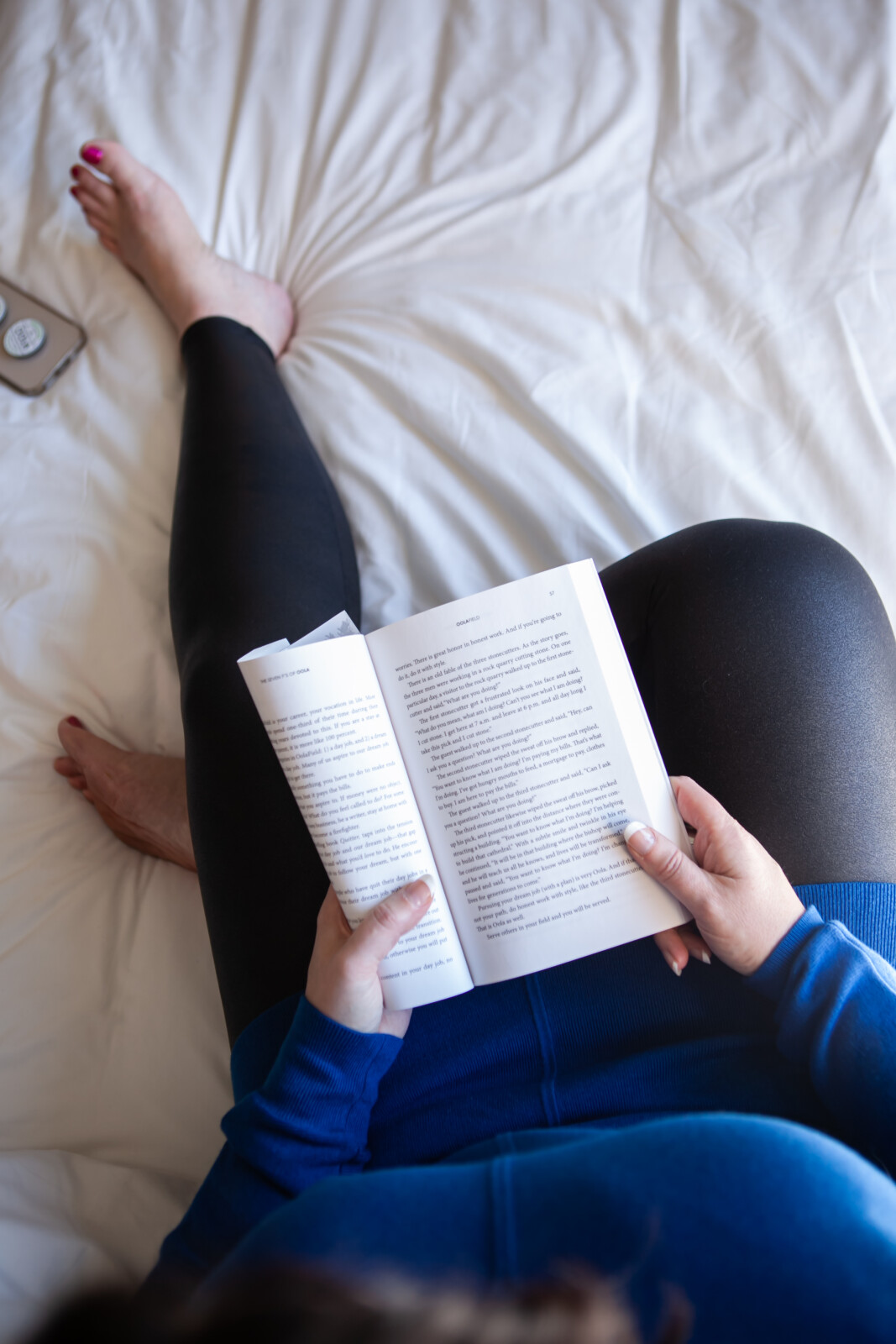
This month is the 7th annual World Alzheimer’s Month. Alzheimer’s Disease International launched the campaign in 2012 to raise awareness and challenge the stigma involving dementia. World Alzheimer’s Month provides an opportunity for businesses, communities, caregivers, and those living with Alzheimer’s to come together and raise money for Alzheimer’s research, spread information about it, and petition the government for improved help and care.
Many of us have parents, grandparents, and loved ones who have or at risk for Alzheimer’s Disease. Let’s take a moment to learn about it and find out how to get involved in World Alzheimer’s Month.
What is Alzheimer’s Disease?
“Dementia” is an umbrella term describing several conditions that affect the areas of the brain that control thought, memory, and language, according to the Centers for Disease Control and Prevention (CDC). Alzheimer’s Disease, the most common type of dementia, is characterized by trouble with memory, cognition, and behavior. Usually, symptoms develop slowly over time and eventually interfere with daily activities. The most commonly reported early-stage symptom involves a person’s experiencing difficulty remembering information learned recently. Other symptoms include increased “disorientation; mood and behavior changes; confusion about events, time and place; unfounded suspicions about family, friends, and professional caregivers; and difficulty speaking, swallowing, and walking,” according to the Alzheimer’s Association. The advanced version of the disease sometimes renders a person unable to hold a conversation or respond to their environment.
Currently, no cure is available for Alzheimer’s Disease. Some treatments are available to slow the development of the disease and improve quality of life.
Who is Affected by Alzheimer’s?
More than 35.6 million people worldwide have Alzheimer’s Disease. In the United States, about 5.7 million people are living with the disease, and that number is projected to increase to almost 14 million in 2050. It’s the sixth-leading cause of death in the nation. Most people who have or develop the disease are older than 65, though younger people have a chance of developing Alzheimer’s, too. Currently, about 200,000 Americans younger than 65have early-onset Alzheimer’s disease.
Let’s not forget about the many individuals and families who care for those who have Alzheimer’s. Currently, 16.1 million Americans give unpaid care to someone who has dementia. These caregivers—just in 2o17—provided approximately 18.4 billion hours of care.
How Can I Get Involved in World Alzheimer’s Month?
Those wishing to observe World Alzheimer’s Month are encouraged to participate in a variety of ways.
Participate in an Alzheimer’s Walk: The Alzheimer’s Association spearheads the Walk to End Alzheimer’s for which people gather in more than 600 communities nationwide to participate in a walk designed to raise funds and awareness for Alzheimer’s research, care, and support. Find a walk that hasn’t happened yet or donate to a friend or organization’s walk.
Learn more about Alzheimer’s Disease: Many people do not know what Alzheimer’s is or how to recognize it. Learn about its signs and symptoms so you can recognize them if necessary and get loved ones the care they need.
Make a donation to the Alzheimer’s Association or another related foundation: Alzheimer’s Disease is increasing in prevalence and is massively underfunded. Every donation helps! You can donate to the Alzheimer’s Association here or choose your own foundation.
Help raise awareness: To help raise awareness about Alzheimer’s Disease and World Alzheimer’s Month, share the Alzheimer’s Disease International campaign video or the Alzheimer’s Association 2018 Disease Facts and Figures video on social media and use the campaign hashtags #Every3seconds and #WorldAlzMonth.
Offer a helping hand: If you know someone who provides care to a loved one who has Alzheimer’s Disease, ask how you can help. Taking care of another person is a privilege, but it can also be stressful and overwhelming. Offer to cook a meal for the family, pay a visit, or just be a listening ear.

